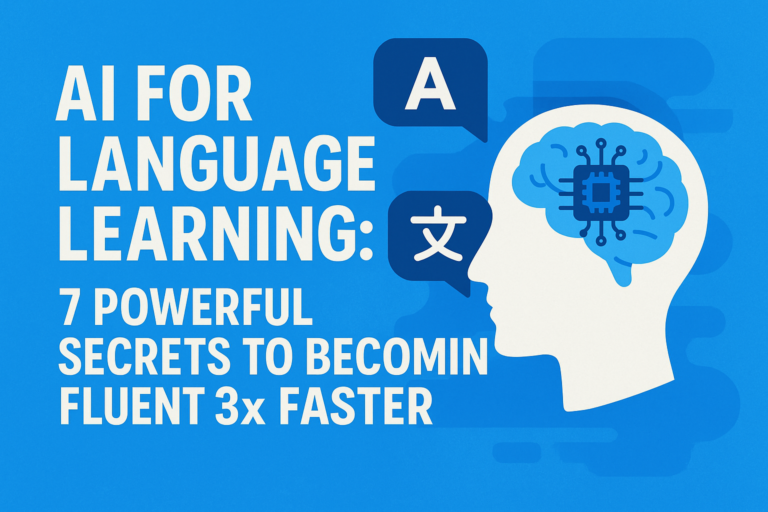Data paints a clear picture: the global AI market is projected to reach $407 billion by 2027, yet AI project ideas remain mysterious to many. For business owners and marketing managers, harnessing artificial intelligence doesn’t require a PhD in machine learning.
This guide provides a practical pathway to integrating AI into your operations, even with zero prior experience.
Facing Market Saturation and Manual Bottlenecks
The digital landscape is crowded. Businesses scramble for visibility while juggling manual processes that drain resources and slow down decision-making. This saturation creates a critical bottleneck: the need for efficient, innovative solutions to maintain a competitive edge. Is it possible to implement AI effectively without significant technical overhead or prohibitively expensive tools?
Enter AI project ideas. These aren’t complex research projects but practical, business-focused applications designed to solve real-world problems. They act as a strategic power-up, transforming your operations by automating tasks, extracting valuable insights from data, and personalizing customer interactions. They unlock efficiency and innovation for your business.
The Strategic Toolkit: Your Foundation for Success
Building effective AI projects starts with the right tools and mindset. Think of it as assembling a strategic toolkit.
Strategic Foundation
Before diving into technology, ground your AI project ideas in a solid understanding of your objectives. Ask yourself:
- What business goals are you trying to achieve?
- Where are the bottlenecks in your current processes?
- What problems are your customers complaining about?
This clarity ensures your AI initiatives align directly with your strategic vision.
Essential AI Tools
Next, leverage user-friendly AI software tools designed for non-technical users. Here are some options to explore:
- WordLift.io: Utilize WordLift’s AI capabilities to automatically generate structured data markup, boosting your website’s SEO performance in the SERPs. Homepage
- Lensa (by Momentive): Craft personalized communication, such as emails and social media messages, using AI that adapts to individual recipient profiles. Homepage
- Beautiful.ai: Explore its AI-powered design and document generation tools, simplifying the process of creating visually appealing marketing content. Homepage
Remember, these tools are “assistants,” not replacements. Human expertise combined with AI capabilities produces the best results, guiding the AI towards desired outcomes.
External AI Power Sources
Beyond user-facing tools, consider AI APIs powered by larger external AI companies like OpenAI. These provide robust language models accessible via code (though often requiring basic coding knowledge). Examples include the OpenAI API, Anthropic’s API, or Google’s Gemini API (often accessed via Google Colab for free). These external platforms democratize beginner AI projects, offering powerful language understanding capabilities. Connecting these to your business logic or processes is often the key to unlocking sophisticated AI functions without building deep tech stacks yourself. This flexibility allows diverse AI project ideas tailored specifically to your unique needs.
Time & Resource Investment: The AI Advantage
Traditional methods of automating tasks or performing data analysis often involve manual coding, complex software, or extensive process mapping. This requires both time and specialized personnel.
Conversely, AI-powered methods significantly accelerate this process, leveraging pre-trained models and intuitive interfaces. Let’s quantify the difference for a hypothetical content generation AI project:
- Manual Method: Creating 10 blog posts from market research data might take 20 hours (research) + 15 hours (writing) + 5 hours (editing) = 40 hours.
- AI-Powered Method: Using an AI tool like Beautiful.ai or a language model API, you might spend 1 hour (structuring prompts) + 3 hours (refining AI outputs) + 2 hours (light editing) = approximately 6 hours.
The Calculation:
Time saved = 40 hours – 6 hours = 34 hours
Expressed as a percentage: (34/40) * 100% ≈ 85% time reduction. This saved time translates directly into increased productivity and allows you to focus on higher-level strategic initiatives.
The Implementation Blueprint: Bringing Your Project to Life
Ready to start? Here’s a clear roadmap, focusing on a general AI project ideas example (like automating customer service responses or generating product descriptions):
Step 1: Define Your Goal Clearly – Be specific: “Reduce average response time for customer inquiries from 1 hour to within 30 minutes automatically.” or “Generate unique product description variations optimized for [platform, e.g., Amazon].”
Step 2: Gather Relevant Data or Define Input – Draft example customers for email campaigns with Lensa, or compile product specs for description generation. Ensure your input data is clean and relevant.
Step 3: Choose Your Tool – Based on your goal, pick the best option: WordLift for SEO tagging, Beautiful.ai for document generation, or integrate an API for complex NLP tasks. Consider Lensa for personalized outreach based on CRM data.
Step 4: Input the Data & Refine Prompts – Use the tool according to its instructions. Provide clear examples if required. Refine the input for better AI understanding.
Pro-Tip: Start Small, Scale Smart
Don’t go all-in on day one. Begin with a pilot project using a first AI project. Test a small batch of outputs, compare results, gather team feedback, and iterate before full deployment. This minimizes risk and allows you to refine your approach using AI project ideas tailored for precision.
Assume you’re using a tool like Beautiful.ai for generating landing page descriptions.
Step 5: Leverage the Output and Analyze
Once the tool generates the initial descriptions, review them. Is the tone aligned with your brand? Are they accurate and compelling? Select the best outputs or manually edit automatically generated ones. Don’t forget that human expertise is crucial for ensuring brand voice and accuracy.
Step 6: Integrate or Roll Out** – Decide if this output replaces an existing manual step or enhances current processes. Plan your rollout carefully – perhaps starting with less critical landing pages first.
Step 7: Monitor Consistently** – Implement a process to track generated content quality over time.
Measuring Success: KPIs & ROI for AI Projects
Success with AI isn’t just about technical execution; it’s about tangible business results. Track these business-centric KPIs:
| Metric | What It Tells You |
|---|---|
| Lead Generation Quantity | Number of qualified leads generated via AI tools like Lensa. |
| Content Production Speed | % reduction in time taken to produce marketing materials (e.g., post titles) using AI. |
| SEO Ranking Improvement | Increase in organic traffic or ranking for target keywords (e.g., keyword research analysis in WordLift). |
| Email Response Accuracy | Click-through rates (CTR) or conversion rate on personalized email campaigns using Lensa. |
Monitor these consistently. Documenting changes before and after implementation provides concrete proof of the value delivered by your AI project ideas, which you can then invest more resources into scaling.
Scaling & Advanced Strategies: Pushing Further
Mastering the basics allows for expansion.
- Hybrid Automation: Combine AI outputs with manual approval workflows (e.g., an AI drafts descriptions, a human approves the best ones).
- Adaptive Learning: Use threshold-based improvements. Define criteria (e.g., “Use AI generative output only if keyword density > X%”) and adjust rules based on performance data.
- Cross-Channel Integration: Connect your AI tools to your CRM, email marketing software, or CMS, allowing for truly personalized and seamless customer experiences across touchpoints. Integrate AI-powered content discovery into your content strategy for optimal engagement.
Example: You start with personalizing outreach using Lensa. Next, integrate that segmentation with an AI-powered content recommendation system to tailor website content, achieved through beautifulCrm integrations and custom script development referencing AI models.
Strategic Business Applications: Across Various Industries
B2B SaaS Companies: Use AI to analyze support ticket data for common issues, automate responses (“Step 1: Integrate support chat logs”), or generate insightful customer summaries (“Step 2: Feed CRM data into an AI summarization tool”).
E-commerce Stores: Implement automated product image tagging (using WordLift or dedicated image analysis APIs) or dynamic pricing adjustments (“Step 1: Define pricing rules; Step 2: Use an AI pricing prediction model”). E-commerce can leverage first AI projects like demand forecasting to optimize stock levels.
Digital Agencies: Leverage AI project ideas to accelerate content audits (“Step 1: Input content URLs into a search analytics tool; Step 2: AI identifies opportunity areas”) or generate initial concepts based on client briefs.
Common Strategic Mistakes to Avoid
Even beginners stumble. Here are some pitfalls:
- Ignoring Foundational Data Quality: “Bad input, bad output.” Ensure your data is accurate and clean for reliable AI results. Poor data hygiene negates most beginner AI projects.
- Overestimating Initial Output Quality: AI produces drafts/generations. Expect refinement and quality control. Think of the first AI project as a foundation requiring expert layering.
- Underestimating Strategic Integration: Placing AI as a one-off task won’t unlock its full potential. Embed it into existing workflows for sustainable impact and to leverage AI project ideas for the long-term.
- Forgetting Brand Voice and Nuance: Generic AI lacks context. Continuously manage output to ensure it aligns perfectly with your company’s brand and resonates well with your target audience. However, use your first AI project to generate ideas that align better with user needs.
Building Your Content Engine: Systems & Automation
Instead of relying on a single AI project ideas instance, imagine creating a “content engine” powered by AI:
- Automated Content Idea Generation
- Drafting based on research/intent
- SEO analysis and optimization (e.g., using WordLift)
This creates a flywheel: AI powers content creation, which delivers more value to customers, and feedback loops allow continuous improvement. Beginner AI projects can be the building blocks of such automated systems. Plan your data flows and ensure outputs feed into future project foundations.
Conclusion: Your Competitive Edge is Just a Project Away
Incorporating AI doesn’t have to be complex or costly. By starting with focused AI project ideas tailored for business owners like you, you can achieve remarkable efficiency and strategic advantages.
Action Steps:
- Share Your Experience or Challenge: Tell us in the comments below what your first AI project ideas will be or the biggest hurdle you face.
- Schedule Your Strategy Call: Ready to get started? Book a discovery call with our experts at Schedule a Call to discuss your specific needs.
FAQs: Your AI Project Journey Starts Here
Q1: Do I need programming skills to start with AI projects?
A: For many entry-level AI project ideas, the answer is no. Tools like the ones mentioned offer intuitive interfaces and no-code platforms, making implementation feasible for non-technical users. Start with simple tasks like content generation or SEO optimization.
Q2: Is investing in AI cost-effective for small businesses?
A: Yes, potentially. Create lead scoring, personalized content creation, or automate manual report generation using beginner AI projects to save time and resources initially, focusing on high ROI opportunities like content marketing using AI tools. Many tools offer tiered pricing or free trials. Evaluate the time savings against subscription costs.
Q3: How do I handle potential biases in AI outputs?
A: Be aware that AI models trained on data reflecting existing biases can perpetuate these. Actively review and override AI suggestions, provide diverse training data if possible (beyond the initial tool), and focus on ethical considerations from the start of your first AI project. Regular auditing is key.




